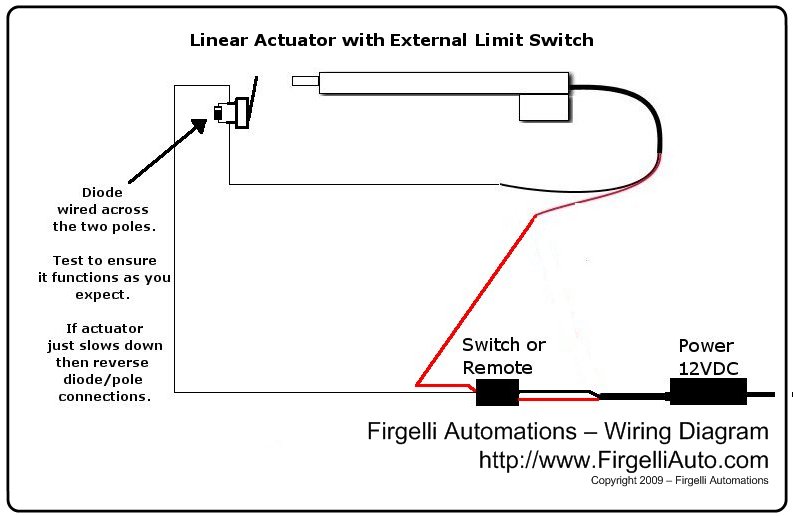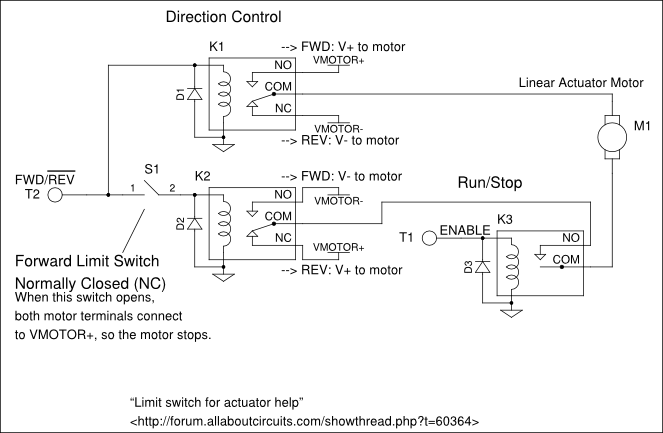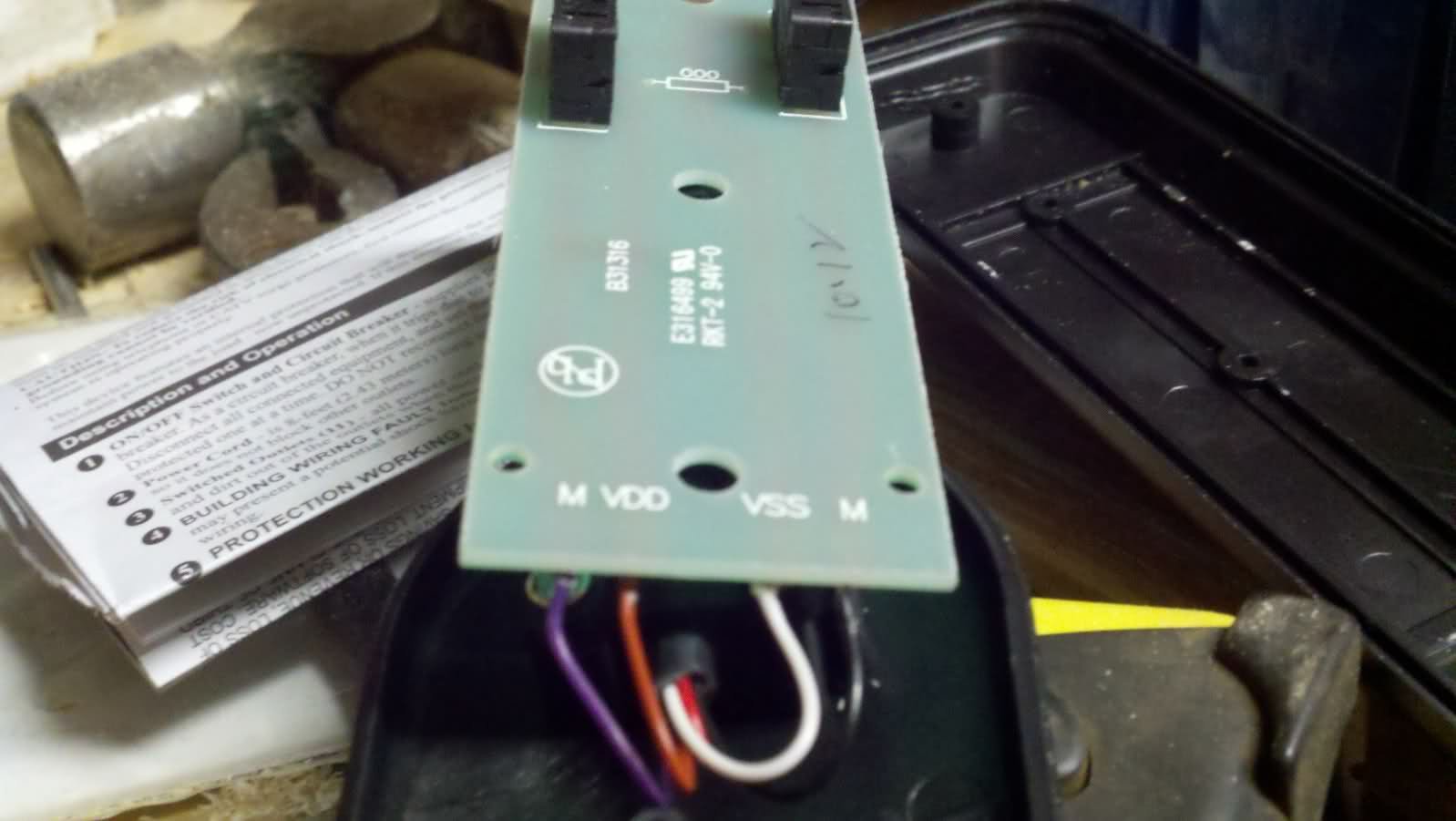Hey all i have bought a actuator from firgelli auto and i need to add a limit switch for the down part.

That is a drawing from the company's website about how to hook up the limit switch. Now i have 2 problems with this drawing:
1) It does not tell me what type of switch to get
2) Wont this hinder the up part if the ground is cut off when it hits the lever?
They sell a kit with the limit switch(s) and other things but again they do not tell what type of limit switches they are.
http://www.firgelliauto.com/product_info.php?cPath=70&products_id=111
I plan on hooking the up/down to a relay (2 of them) that i control via a PC. They have a diagram for that as well

I emailed them and asked them if this would work with my own setup:

And this is a PDF of the relay:
http://denkovi.com/Documents/23-3.pdf
Any help would be great to (1) See what type of limit switch i need to buy and (2) Make sure my layout for the relay is correct.
Thanks!
David

That is a drawing from the company's website about how to hook up the limit switch. Now i have 2 problems with this drawing:
1) It does not tell me what type of switch to get
2) Wont this hinder the up part if the ground is cut off when it hits the lever?
They sell a kit with the limit switch(s) and other things but again they do not tell what type of limit switches they are.
http://www.firgelliauto.com/product_info.php?cPath=70&products_id=111
I plan on hooking the up/down to a relay (2 of them) that i control via a PC. They have a diagram for that as well

I emailed them and asked them if this would work with my own setup:
My relays look like so:RELAY UP:
> Purple wire > C
> Grey wire > NC
> Blue wire > NO
> RELAY DOWN:
> Black wire > C
> Grey wire > NC
> Blue wire > NO

And this is a PDF of the relay:
http://denkovi.com/Documents/23-3.pdf
Any help would be great to (1) See what type of limit switch i need to buy and (2) Make sure my layout for the relay is correct.
Thanks!
David












